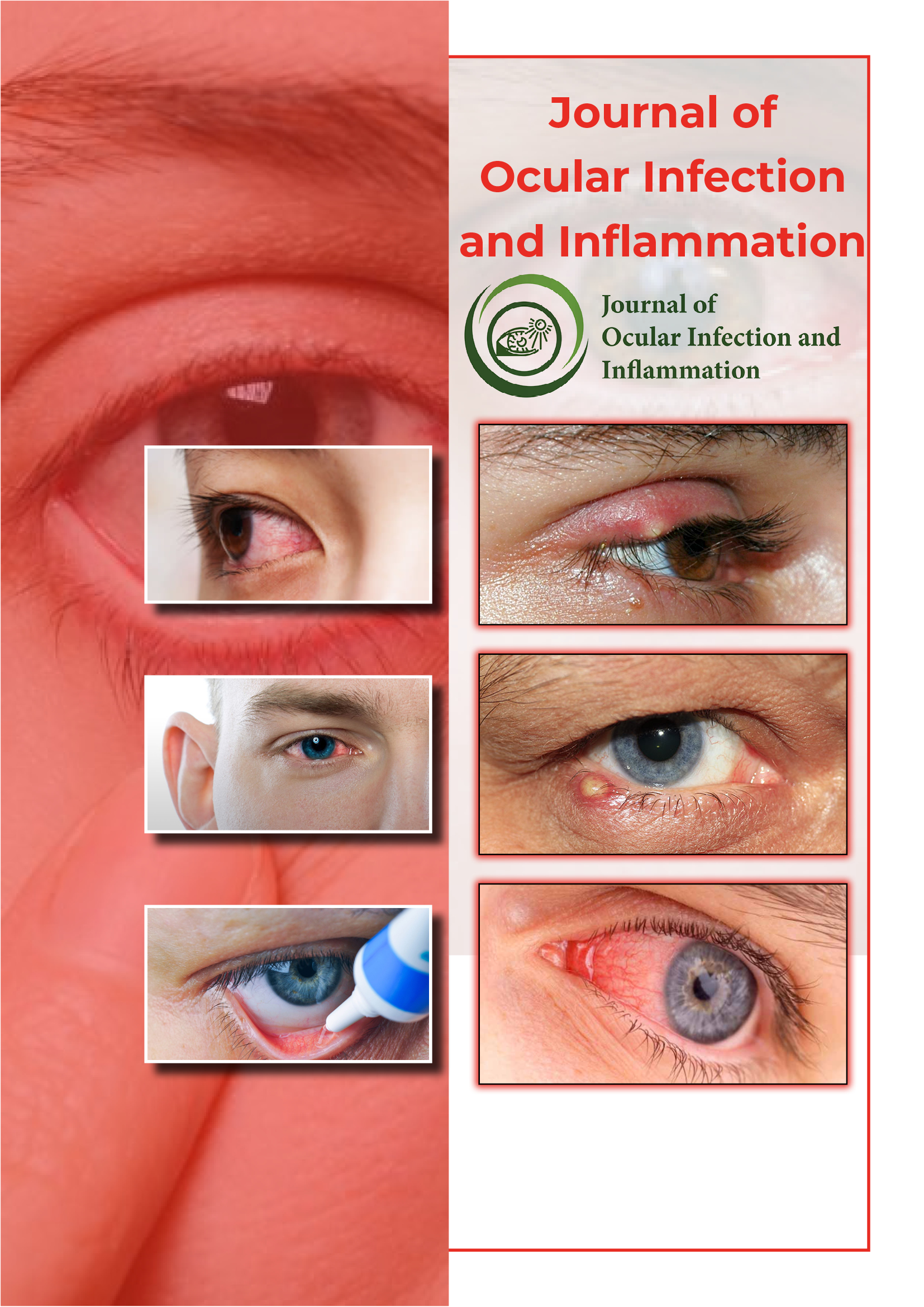Useful Links
Share This Page
Journal Flyer

Open Access Journals
- Agri and Aquaculture
- Biochemistry
- Bioinformatics & Systems Biology
- Business & Management
- Chemistry
- Clinical Sciences
- Engineering
- Food & Nutrition
- General Science
- Genetics & Molecular Biology
- Immunology & Microbiology
- Medical Sciences
- Neuroscience & Psychology
- Nursing & Health Care
- Pharmaceutical Sciences
Opinion Article - (2024) Volume 5, Issue 1
Innovations in Rosacea Study: From Microbial Dysbiosis to iPSC Models
Jian Guo*Received: 26-Feb-2024, Manuscript No. JOII-24-25621; Editor assigned: 28-Feb-2024, Pre QC No. JOII-24-25621 (PQ); Reviewed: 13-Mar-2024, QC No. JOII-24-25621; Revised: 20-Mar-2024, Manuscript No. JOII-24-25621 (R); Published: 27-Mar-2024, DOI: 10.35248/JOII.24.05.125
Description
Rosacea, an adaptable chronic inflammatory disorder affecting the skin and eyes, represents significant challenges for both patients and healthcare providers. With its various clinical presentations and complex origins, understanding the fundamental physiopathogenic mechanisms is essential for effective management and treatment. In this opinion article, we undertake a comprehensive exploration of the common and specific pathophysiological methods connected in dermatological and ocular rosacea. Additionally, we aim to explore the developing region of research models aimed at understanding the complexities of this complex condition.
Shared pathophysiological mechanisms
At the center of both dermatological and ocular rosacea lies a complex exchange of inflammatory, vascular, and microbial factors. One of the central features of rosacea is dysregulation of the innate immune system, characterized by heightened activation of Toll-Like Receptors (TLRs) and irregular expression of Antimicrobial Peptides (AMPs). This disturbance leads to chronic inflammation and tissue damage, contributing to the characteristic erythema, papules, and pustules observed in dermatological rosacea.
Simultaneously, ocular rosacea results as inflammation of the ocular surface and surrounding structures, often presenting with symptoms such as dryness, irritation, and sensitivity to light. While sharing common inflammatory methods with dermatological rosacea, ocular involvement introduces additional complexities, including changes in tear film composition, meibomian gland dysfunction, and corneal neovascularization. These ocular symptoms highlight the systemic nature of rosacea and the importance of an innovative approach to disease management.
Vascular dysfunction results as another attribute of both dermatological and ocular rosacea, contributing to the persistent erythema, telangiectasia, and vascular hyperreactivity observed in affected individuals. Endothelial dysfunction, characterized by impaired nitric oxide bioavailability and dysregulated vascular tone, plays a central role in perpetuating vascular abnormalities and exacerbating tissue inflammation. Furthermore, neurovascular dysregulation, involving interactions between sensory nerves and blood vessels, intensifies the inflammatory process, creating a self-perpetuating cycle of vascular dysfunction and tissue damage.
Distinct pathophysiological mechanisms
While sharing common inflammatory and vascular features, dermatological and ocular rosacea also show clear pathophysiological mechanisms that necessitate specialized investigation. In dermatological rosacea, the role of the skin microbiome has achieved significant attention in recent years. Dysbiosis, characterized by changes in the composition and scope of dermatological microbial communities, contributes to inflammation and immune dysregulation, perpetuating the disease process. Demodex mites and bacteria such as Staphylococcus epidermidis have been involved in driving inflammation and increasing disease severity in dermatological rosacea.
In contrast, ocular rosacea presents unique challenges, including changes in tear film dynamics, meibomian gland dysfunction, and corneal epithelial barrier disruption. Meibomian gland dysfunction, characterized by abnormal lipid secretion and glandular inflammation, leads to evaporative dry eye and ocular surface inflammation, further increasing the ocular manifestations of rosacea. Additionally, corneal neovascularization and epithelial barrier dysfunction predispose individuals with ocular rosacea to corneal ulceration, scarring, and vision loss, highlighting the need for targeted therapeutic interventions.
Evolution of research models
Advancements in research models have played a vital role in explaining the pathophysiological mechanisms primary dermatological and ocular rosacea. While conventional animal models have provided valuable insights into disease pathogenesis, they often fail to fully recapitulate the complexities of the human condition. As such, there has been an increasing focus on the development of innovative study models that better copy the disease microenvironment and advance translational research.
Three-dimensional organotypic skin cultures provide a potential approach for studying the interactions between immune cells, epithelial cells, and microbial communities in the context of cutaneous rosacea. These models allow researchers to recreate the complex architecture of the skin and investigate the dynamics of inflammation, vascular dysfunction, and microbial dysbiosis in a controlled environment. Similarly, ex vivo skin explants provide a valuable resource for studying disease mechanisms and evaluating the efficacy of novel therapeutic agents in a physiologically relevant context.
In the area of ocular rosacea study, patient-derived induced Pluripotent Stem Cells (iPSCs) hold immense potential for modeling disease pathogenesis and screening therapeutic interventions. By reprogramming patient-derived somatic cells into iPSCs, researchers can generate patient-specific ocular cell types, including corneal epithelial cells, keratocytes, and endothelial cells. These iPSC-derived models enable the investigation of disease-specific phenotypes, drug responses, and personalized treatment approaches, preparing for precision medicine in ocular rosacea.
In conclusion, dermatological and ocular rosacea represents adaptable inflammatory disorders with shared and clear pathophysiological mechanisms. By resolving the complex exchange between immune dysregulation, vascular dysfunction, microbial dysbiosis, and environmental triggers, researchers can gain deeper insights into disease pathogenesis and identify novel therapeutic targets. Moreover, the evolution of innovative research models, including three-dimensional organotypic cultures and patient-derived iPSCs, provides to accelerate the pace of discovery and translation in the field of rosacea research. In the end, a comprehensive understanding of the common and specific physiopathogenic mechanisms primary dermatological and ocular rosacea is essential for developing targeted therapeutic strategies and improving patient outcomes in this challenging disease.
Citation: Guo J (2024) Innovations in Rosacea Study: From Microbial Dysbiosis to iPSC Models. J Ocul Infec Inflamm. 05:125.
Copyright: © 2024 Guo J. This is an open-access article distributed under the terms of the Creative Commons Attribution License, which permits unrestricted use, distribution, and reproduction in any medium, provided the original author and source are credited.

